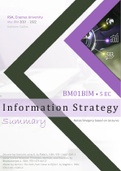1) What is software maintenance? (1)
2) What is software evolution and why do we need it? (3)
3) Types of maintenance (4)?
4) When to use which type of maintenance (2x2 table)?
5) The key to maintenance during development? (4)
6) Why is software maintenance and evolution important (2)?
7) Factors that affect maintenance (4)?
8) What is technical debt (1)?
9) Managing maintenance and evolution? (2)
10) Why is version control important (9)?
11) Lehman’s law of software evolution? (5)
12) Project bathtub curve? (4)
13) What is a defect, bug and failure? (3)
Lecture 3
14) How can software size be measured (2)?
15) How can software structure be measured?
16) What is henry and Kafura’s information flow measure?
17) McCabe’s cyclometric complexity measure
18) Halfstead’s metrics
19) C&K metrics
Lecture 4
20) Why do we need software testing?
21) White box testing vs black box testing
22) Levels of testing
23) Unit testing (3)?
24) Ideal scenarios for unit tests?
25) Unit test phases?(4)
, 26) What should be tested?
27) Unit test best practices?
28) More tips on unit tests?
Lecture 5
29)
Lecture 6
30) Why do we use measurement?
31) Why use complexity metrics?
32)Product metrics?
33) Process metrics?
34) Direct measures vs indirect measures (2)?
35) Prediction models
36) Confusion matrix (faulty vs non faulty) and calculate how often is the classified correct?
37) Why use prediction?
38) Early life-region in bathtub? (3)
39) Constant failure rate region in bathtub? (3)
40) Wear out reigion in bathtub? (2)
Lecture 7
41) What is a software fault? (1)
42) What is error, fault and failure? (3)
43) Why should we search for code faults (3)?
44) Causes of faults (4)?
45) Requirements were wrong
46) Deviating from requirements
47) Logical errors in coding
48) Testing inadequacies
49) Fault density metric formula and how it’s calculated?










